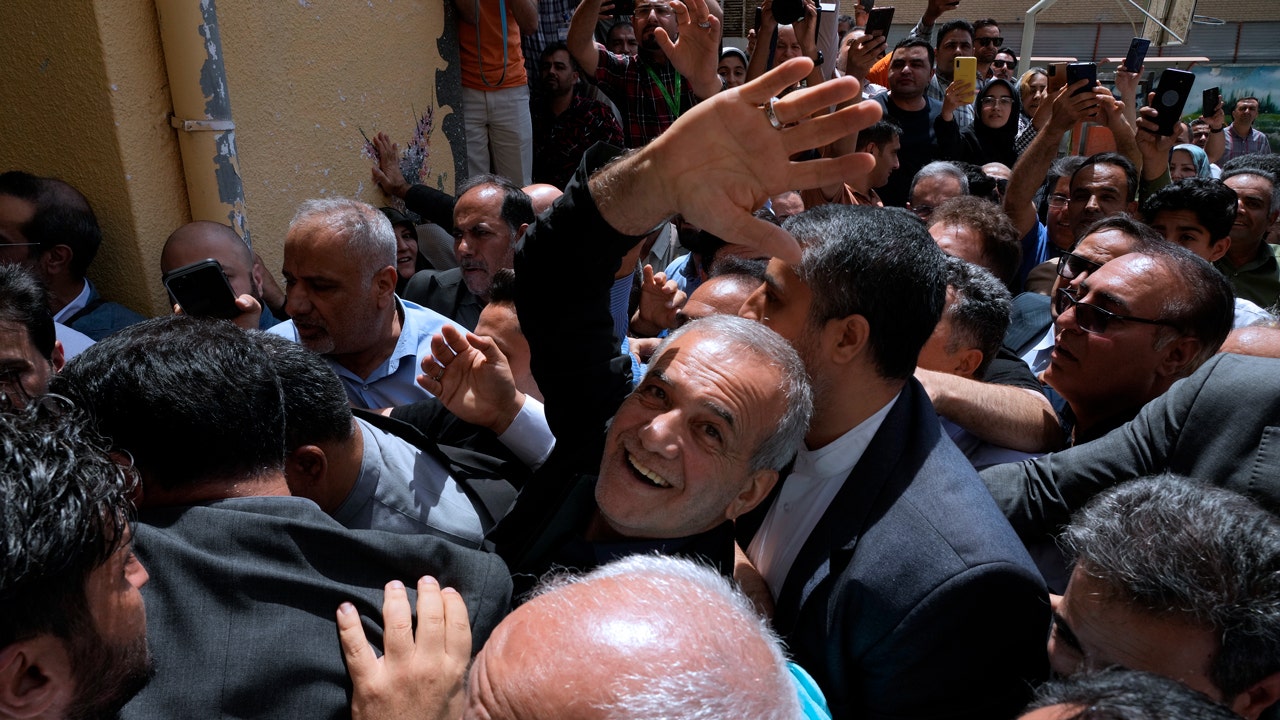
- Iranians voted in a presidential runoff between hard-liner Saeed Jalili, a former nuclear negotiator, and reformist lawmaker and heart surgeon Masoud Pezeshkian.
- The first round of voting saw the lowest turnout ever for an Iranian election.
- Supreme Leader Ayatollah Ali Khamenei is the final decision-maker on matters of state, but whichever man ends up winning the presidency could bend the country’s foreign policy toward confrontation or collaboration with the West.
Iranians voted Friday in a runoff presidential election between a hard-line former nuclear negotiator and a reformist lawmaker, with both men trying to convince a skeptical public to cast ballots after years of economic woes and mass protests roiling the Islamic Republic.
The race between hard-liner Saeed Jalili and Masoud Pezeshkian, a heart surgeon and longtime member of parliament, comes after a first round of voting saw the lowest turnout ever for an Iranian election, leaving turnout Friday a major question.
Meanwhile, wider tensions have gripped the Middle East over the Israel-Hamas war in the Gaza Strip. In April, Iran launched its first-ever direct attack on Israel over the war in Gaza, while militia groups that Tehran arms in the region — such as the Lebanese Hezbollah and Yemen’s Houthi rebels — are engaged in the fighting and have escalated their attacks.
Iran also continues to enrich uranium at near weapons-grade levels and maintains a stockpile large enough to build several nuclear weapons, should it choose to do so. And while Supreme Leader Ayatollah Ali Khamenei remains the final decision-maker on matters of state, whichever man ends up winning the presidency could bend the country’s foreign policy toward either confrontation or collaboration with the West.
A heavy security presence could be seen on the streets of Tehran on Friday, as crowds appeared light at dozens of polling places. State television broadcast scenes of modest lines at polling centers around the country.
Both Jalili and Pezeshkian voted in southern Tehran, home to many poor neighborhoods, in a bid to boost turnout. Though Pezeshzkian came out on top in the first round of voting on June 28, Jalili has been trying to secure the votes of people who supported hard-line parliament speaker Mohammad Bagher Qalibaf, who came in third and later endorsed the former negotiator.

Reformist candidate for the Iran’s presidential election Masoud Pezeshkian waves as he arrives to vote at a polling station in Shahr-e-Qods near Tehran, Iran, on July 5, 2024. (AP Photo/Vahid Salemi)
One voter, 27-year-old Yaghoub Mohammadi, said he voted for Jalili in both rounds.
“He is clean, without depending on powerful people in the establishment,” Mohammadi said. “He represents those who have no access to power.”
Voter Samira Sharafi, the 34-year-old mother of a toddler, said she voted for reformist Pezeshkian, despite having voted for Qalibaf in the first round. She described him as “more experienced” than Jalili.
There have been calls for a boycott, including from imprisoned Nobel Peace Prize laureate Narges Mohammadi, though potential voters in Iran appear to have made the decision not to participate last week on their own as there’s no widely accepted opposition movement operating within or outside of the country.
State television broadcast images of modest lines at select polling places around the country as polls opened Friday.
As has been the case since the 1979 Islamic Revolution, women and those calling for radical change have been barred from the ballot while the vote itself will have no oversight from internationally recognized monitors.
Interior Minister Ahmad Vahidi, who is in charge of overseeing the election, announced all the polls had opened at 8 a.m. local time.
Khamenei cast one of the election’s first votes from his residence, television cameras and photographers capturing him dropping the ballot into the box.
“I have heard that people’s enthusiasm is more than before,” Khamenei said. “God willing, people vote and choose the best” candidate.
However, Khamenei on Wednesday said that those who didn’t vote last week weren’t against the country’s Shiite theocracy.
“There are reasons behind this matter which should be examined by sociologists and those involved in politics,” he said.
More than 61 million Iranians over the age of 18 are eligible to vote, with about 18 million of them between 18 to 30. Elections are scheduled to end at 6 p.m. local, but traditionally get extended until midnight to boost participation.
CLICK HERE TO GET THE FOX NEWS APP
Friday’s election marks only Iran’s second presidential runoff since 1979. The first came in 2005, when hard-liner Mahmoud Ahmadinejad bested former President Akbar Hashemi Rafsanjani. Under Ahmadinejad, Iran faced international sanctions over its advancing nuclear program, as well as the 2009 Green Movement protests and the crackdown that smashed them.
Pezeshkian’s supporters have been warning Jalili will bring a “Taliban”-style government into Tehran, while Jalili has criticized Pezeshkian for running a campaign of fear-mongering.
The election comes after the 63-year-old late President Ebrahim Raisi died in a May 19 helicopter crash that also killed the country’s foreign minister and others. He was seen as a protege of Khamenei and a potential successor as supreme leader. Still, many knew him for his involvement in the mass executions that Iran conducted in 1988, and for his role in the bloody crackdowns on dissent that followed protests over the 2022 death of Mahsa Amini, a young woman detained by police over allegedly improperly wearing the mandatory headscarf, or hijab.
